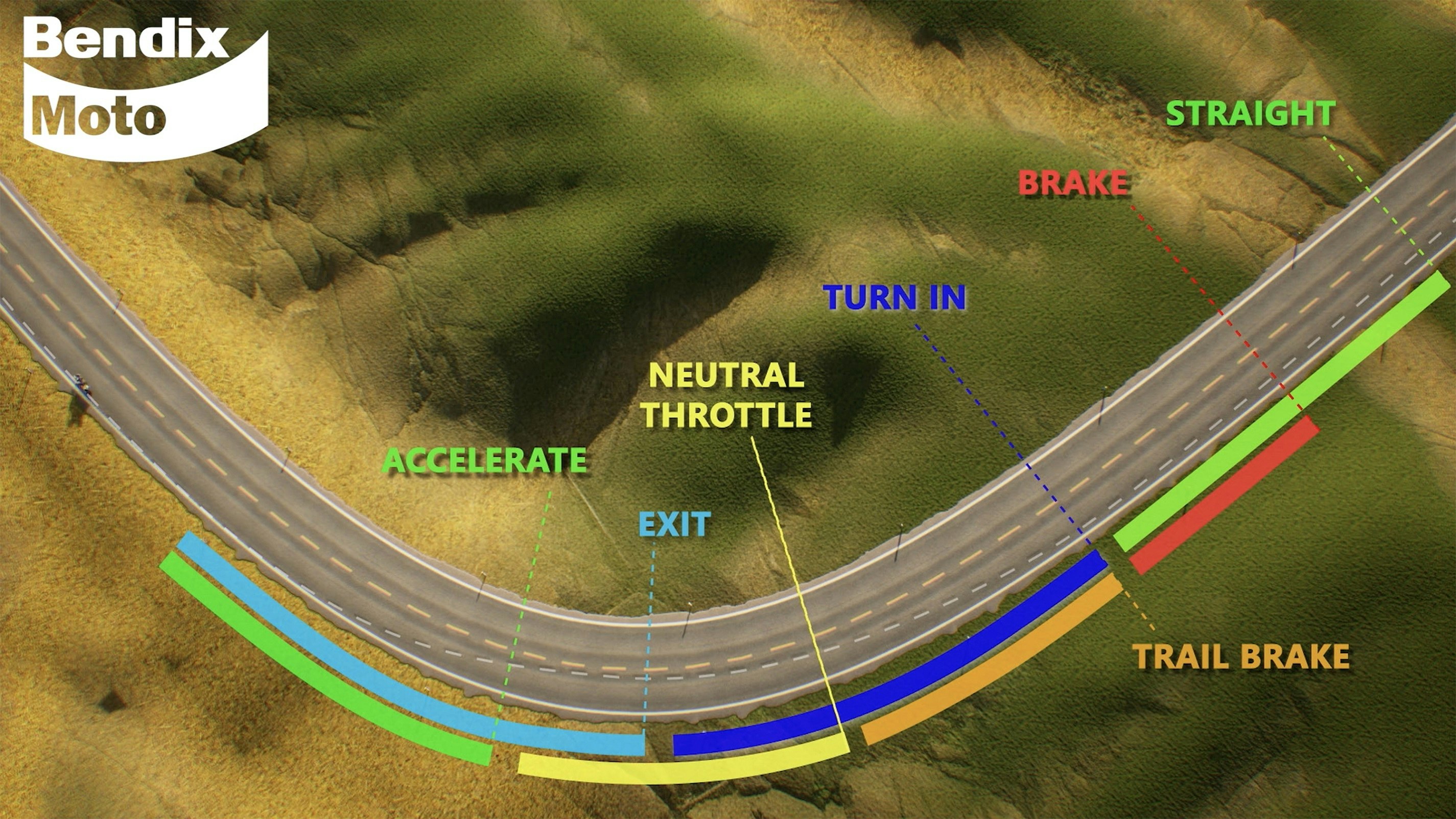More brake checks for advanced riders says Bendix
August 14, 2024 Beyond the bike
Regular motorcycle riders, particularly those who are more advanced, will be well familiar with trail braking and filtering – these are two important techniques that provide greater control of the motorcycle and when executed correctly, help keep riders safer on the road.
Both skills rely on brake application. In the case of filtering, the rider stays in gear and the back brake is engaged, which is ‘dragged’ along to assist slow speed maneuvering while travelling between two lanes of traffic.

The filtering technique sees riders 'drag' the rear brakes which gives additional stability and control when travelling at slow speeds between two lanes of traffic.
Similarly, the concept of trail braking in corners involves blending braking and turning simultaneously, allowing front brake pressure to be carried while steering into a corner before gradually trailing off the brake.
In applying the brakes, the dynamics of the motorcycle change – the front forks compress and load the front tyre, increasing its pressure on the road and its subsequent grip. As the rider slows, this allows the bike to turn on a smaller radius because the bike – still with forks compressed – wants to turn more tightly.

Trail braking blends braking and turning during corners, allowing front brake pressure to be carried while steering.
The downside of these techniques is that they can result in greater brake pad wear, so even if the motorcycle is showing low kilometres at servicing, the pad condition may be consistent with having travelled considerably further.
For technicians it’s therefore important they complete a full brake check every time they service a customer bike, or even when undertaking non-related maintenance, especially when working on larger capacity or sports bikes who are ridden by owners who enjoy spirited riding.
Riders can even check the wear rate of their pads at home. Depending on the motorbike, you may have an inspection cover on the top of the caliper, or can manoeuvre the wheels to find the best view of the pads. Either way, it’s easy to shine a torch into the caliper to see how much friction material remains – there should be around 1.5 to 2mm as a bare minimum.

More frequent brake checks are advised for advanced riders, as brake wear may be greater than what kilometres indicate.
If replacement pads are needed, Bendix Moto offers its Ultimate+ and Street Road Track product lines.
Ultimate+ pads are ideal for the everyday commuter or casual rider and feature dense ceramic materials that provide maximum durability and braking feel. They also deliver Low dust and low noise performance and have a low wear design.
Then for more spirited riding of mid to large capacity bikes and heavier machines, there’s the Street Road Track line-up. These pads use stable friction substances for more predictive braking in all conditions and are designed to stick to rotors faster for more rapid braking and increased control, plus low fade performance.

The Bendix Moto brake pad range consists of the Ultimate+ and Street Road Track product lines. Together, most bike brands and categories are covered.
To learn more about the Bendix Moto range, visit www.bendixmoto.com.au
 Australia
Australia
 New Zealand
New Zealand